There are many different scales in music and some are more common than others. You will have heard of major scales and the minor scales but the diatonic modes are something totally different.
A Brief Summary of the Modes
The musical modes are a series of seven diatonic scales based on the major scale. The modes are sometimes referred to as Greek Modes or modal scales.
In any given major key you can play all seven modes. Each of these modes will start on a different scale degree. As you can see all the different modes are very closely related.
If we look at the note sequence of the modes in the C major scale they will be as follows:
C D E F G A B C – C Ionian Mode
D E F G A B C D – D Dorian Mode
E F G A B C D E – E Phrygian mode
F G A B C D E F – F lydian mode
G A B C D E F G – G Mixolydian mode
A B C D E F G A – A Aeolian Mode
B C D E F G A B – B Locrian Mode
All the notes above use the notes from the c major scale.
What is the Dorian Mode?
The dorian mode is a mode that starts on the second scale degree of a major scale. As we saw above, if you are in C major, the dorian scale will begin on D. D is the second degree of C major.
If you are in the F major scale, the dorian mode will begin on G. G is the second degree of F major. The mode you create will then be the G dorian scale.

If you are in the G major scale, the dorian mode will be begin on A. A is the second degree of G major. The mode you create will then be the A dorian scale.

If you are in the Bb major scale, the dorian mode will begin on C. C is the second scale degree of Bb major. The mode you create will then be the c dorian scale.

From Major Scale to Dorian Mode
As we have seen, the dorian mode can be created from the second degree of a major scale. Remember scale degrees just refer to the number note of the scale.
The pattern of whole step and half steps (semitones and Tones) in the major scale is as follows:
W W H W W W H (T T S T T T S)
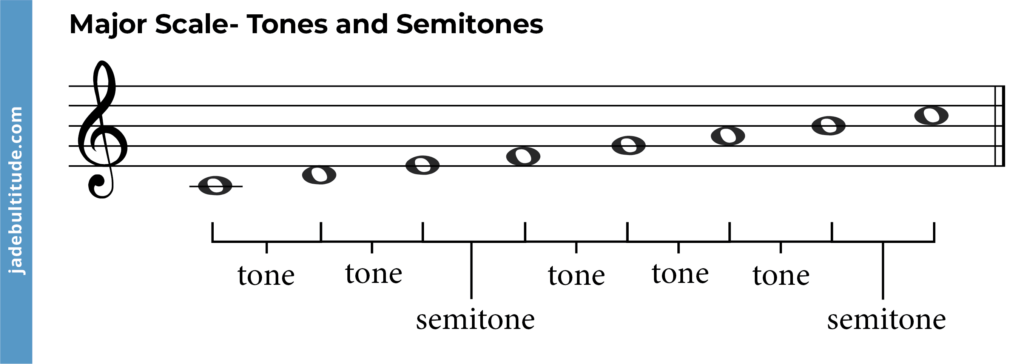
As the dorian mode starts on the second degree of the major scale, this pattern will simply shift up.
The pattern of whole steps and half steps (semitones and Tones) in the dorian mode with therefore be as follows:
W H W W W H W (T S T T T S T)
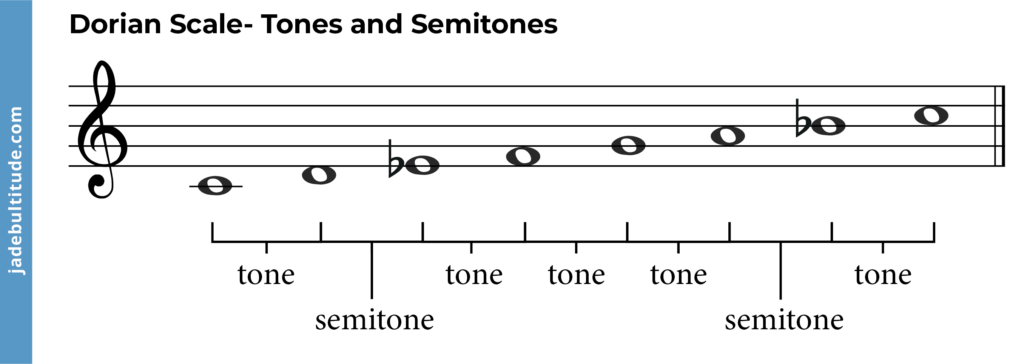
Degrees of the Dorian Mode
The dorian mode is a minor mode. This simply means that this mode has many of the same qualities as a minor scale.
For a major scale to sound major, the third of the scale will be a major third. In the dorian mode, this third degree is a minor third! This is what gives the scale it’s minor quality.
The degrees in a Dorian mode will be as follows:
- Root
- Major second
- Minor third
- Perfect fourth
- Perfect fifth
- Major sixth
- Minor seventh

Comparing Dorian to the Major Scale
As we have seen, it is possible to build modes from different major scales. The major scale is the foundation of all Western music theory and also the scale from which we can build all of our modal scales.
Although both the major scale and the dorian mode share the same notes, there are some significant differences.
You must remember that when the starting note of a scale changes, this means the root/tonal centre has completely changed. By doing this we alter all of the scale interval patterns as well. As we saw above.

These different intervals give the dorian mode it’s more minor sound and therefore will most likely be used to write solemn music.
Comparing Dorian to the Natural Minor Scale
We can also compare the dorian mode to the natural minor scale.
The natural minor scale is sometimes referred to as the aeolian mode and it is very similar to the dorian mode in that both the natural minor scale (aeolian mode) and the dorian scale have a minor third interval between the root and third note.
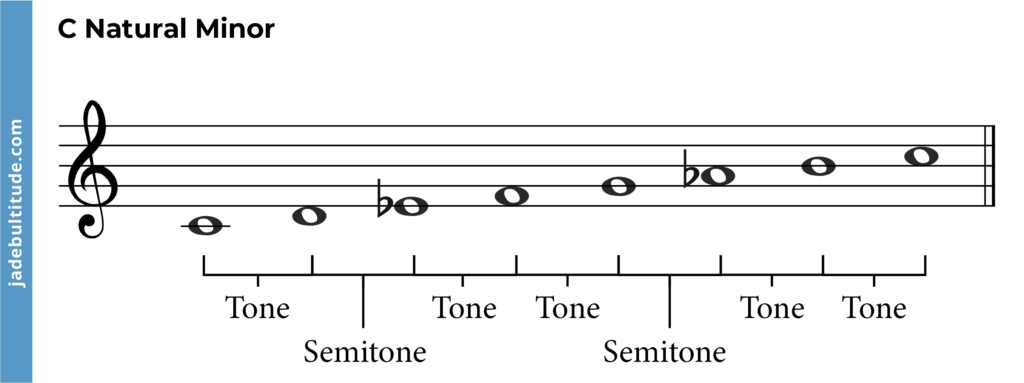
The only difference between these two modes is the interval of a major sixth. The dorian mode has a major sixth between the root and the sixth note and the aeolian (natural minor scale) has a minor sixth between the root and the sixth note.

How to Play the Dorian Scale
You can play the dorian scale on any instrument. Whether you play the piano, guitar or flute all the modes will contain all the same notes on each instrument. All you must do is learn the notes of that particular mode. Once you are comfortable playing scales you can then begin to play all the modes!
For example, the d dorian mode consists of all natural notes.
D E F G A B C D
Learn these notes and you can play it on any instrument. Below you can see the notes on the piano.
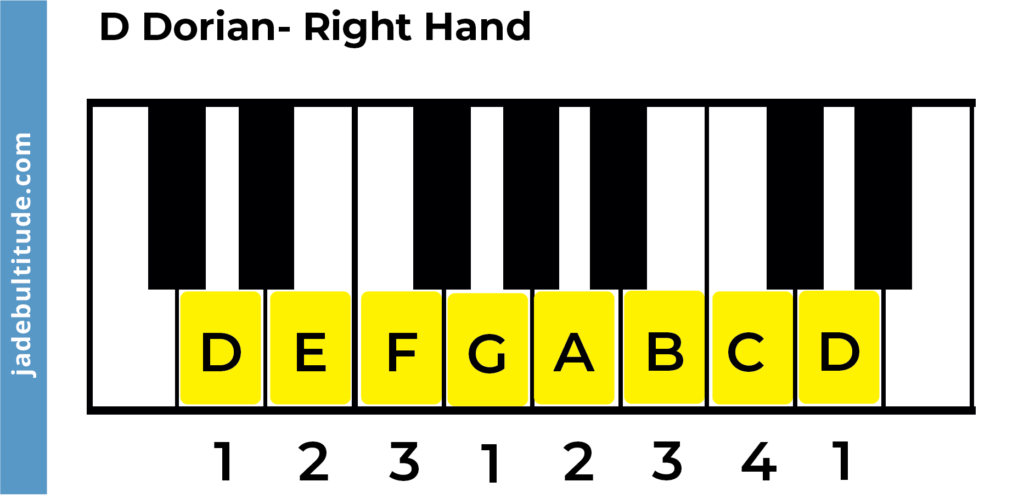
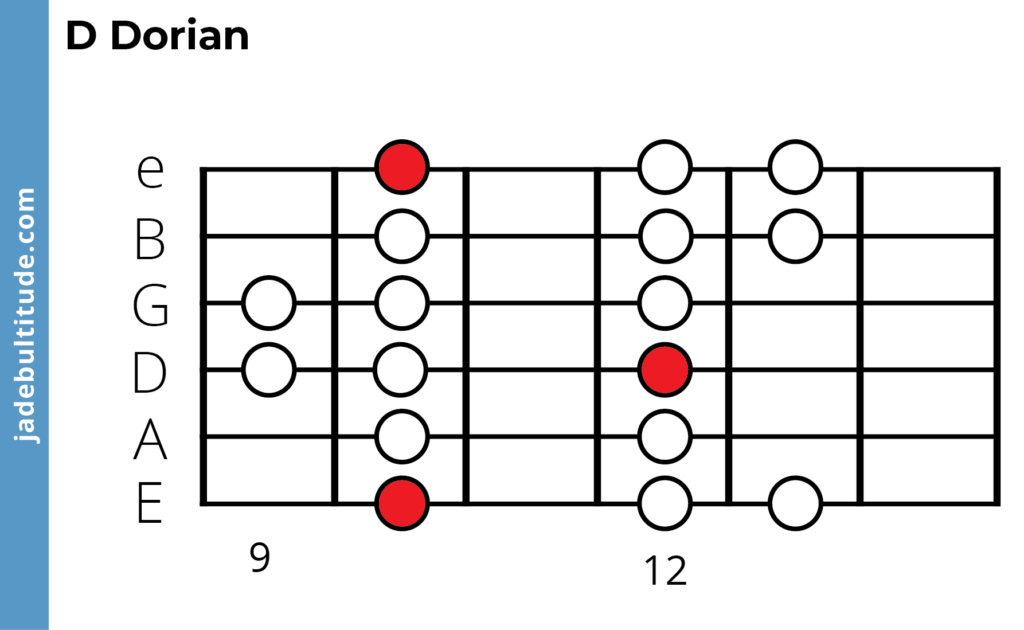
Music Written in the Dorian Mode
The dorian mode is a very versatile scale and is used in many pieces. The dorian scale is most commonly seen in jazz music but it is also seen in other genres of music from pop to rock to classical music. The dorian mode, although a minor mode, works well with both the minor scale and the major scale due to its unusual pattern of intervals. Dorian scales also work extremely well with the pentatonic scale (minor pentatonic scale and major pentatonic scale).
There are many pieces written in the dorian scale. Let’s have a look at some of these dorian mode songs.
The famous sea shanty ‘What shall we do with the drunken sailor’ is written in the e dorian mode and is a great first example to kick off our dorian songs.
Another great example of a dorian mode being used is in Scarborough Fair. The Simon and Garfunkel version is written in a dorian mode.
‘Mad World’ by Tears for Fears is also written in a dorian!
‘Eleanor Rigby’ by the Beatles is a great example of the e dorian mode. This piece shows this versatile mode very clearly. The minor third from the dorian scale creates the melancholic sound but the major sixth interval adds a certain brightness!
List of Dorian scales
Although the D dorian scale is the easiest mode to create as it comes from the second note of the c major scale, meaning you only have to play the white keys on the piano, you can create a dorian scale on any note you like! As long you keep the same interval pattern you can create the dorian mode on any note. Each of the modes below have been created using the whole step and half steps pattern we saw earlier.
C dorian mode – C D Eb F G A Bb C
C# dorian mode – C# D# E F# G# A# B C#
Db dorian mode – Db Eb Fb Gb Ab Bb Cb Db
D dorian mode – D E F G A B C D
D# dorian mode – D# E# F# G# A# B# C# D#
Eb dorian mode – Eb F Gb Ab Bb C Db Eb
E dorian mode – E F# G A B C# D E
F dorian mode – F G Ab Bb C D Eb F
F# dorian mode – F# G# A B C# D# E F#
Gb dorian mode – Gb Ab Bbb Cb Db Eb Fb Gb
G dorian mode – G A Bb C D E F G
G# dorian mode – G# A# B C# D# E# F# G#
Ab dorian mode – Ab Bb Cb Db Eb F Gb Ab
A dorian mode – A B C D E F# G A
Bb dorian mode – Bb C Db Eb F G Ab Bb
B dorian mode – B C# D E F# G# A B
Which chord progressions can you use the Dorian scale with?
Dorian scale chord progressions are a series of chords derived from the dorian scale. To build a chord progression in the dorian scale you must first simply choose chords that can be created with these notes. The first place to start is to create a chord (triad) on every note of the chosen dorian mode. Below you can see a chord built on every note of the d dorian scale, notice that none of the notes have an accidental on and this is because the d dorian has no sharps or flats.

Each of these chords can then be labelled so you know what each chord is. If you need to learn more about these labels then make sure to check out the chord post here.
Chord I in the d dorian scale is a minor chord as the interval between D and F is a minor third. We will then label this chord with a lower case i to indicate that it is a minor chord built on the root of the scale. Each chord can then be labelled in this way and we will then know which chords have a minor quality and which ones have a major quality! If the chord has a major quality the third will be a major third and we will label this chord with capital Roman numerals.

When writing a chord progression it is always advisable to use the root chord first. This will establish the key you are in. The other chord that is important to keep when writing in dorian modes is chord IV. This is important as this chord is really what gives the chord progression a dorian sound!
In an aeolian mode this chord IV would usually be a minor triad, but in the dorian mode, this chord is a major triad and it is major triad that gives the dorian scale it’s unique sound. This major triad changes the melancholic sound of the mode into a more hopeful if not joyful feeling!
You can then fill in the gaps of your chord progression with other major triads or minor triads from your selection above.
If you use this formula you can write your own music with this unique mode. Below you can see an example chord progression in the d dorian scale.
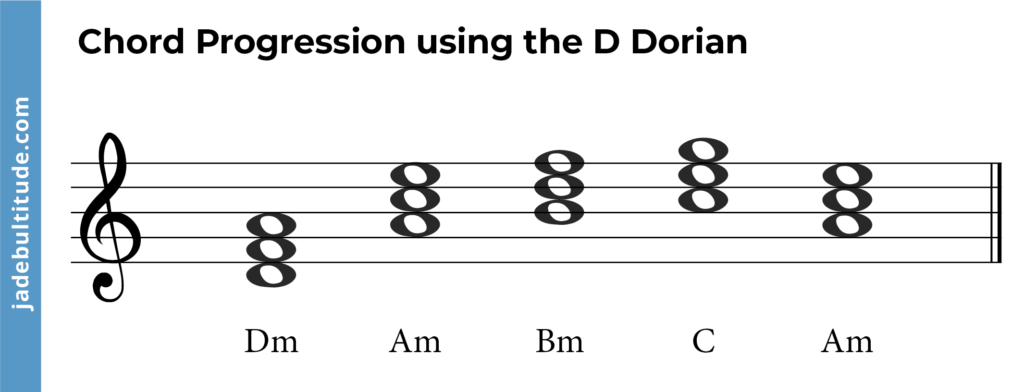
Want to learn more?
For an overview of all modes, see our complete guide to modes.
To learn more about the other modes you can visit our pages on each mode here:
- Ionian mode
- Phrygian mode
- Lydian mode
- Aeolian mode
- Mixolydian mode
- Locrian mode

Perhaps my favourite Dorian mode piece is Sanomi by Urban Trad, which was Belgium’s entry to the Eurovision Song Contest in 2003. It’s both lyrically (being in an imaginary language!) and musically lovely.